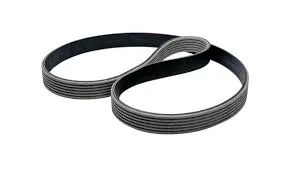- Arabic
- French
- Russian
- Spanish
- Portuguese
- Turkish
- Armenian
- English
- Albanian
- Amharic
- Azerbaijani
- Basque
- Belarusian
- Bengali
- Bosnian
- Bulgarian
- Catalan
- Cebuano
- Corsican
- Croatian
- Czech
- Danish
- Dutch
- Afrikaans
- Esperanto
- Estonian
- Finnish
- Frisian
- Galician
- Georgian
- German
- Greek
- Gujarati
- Haitian Creole
- hausa
- hawaiian
- Hebrew
- Hindi
- Miao
- Hungarian
- Icelandic
- igbo
- Indonesian
- irish
- Italian
- Japanese
- Javanese
- Kannada
- kazakh
- Khmer
- Rwandese
- Korean
- Kurdish
- Kyrgyz
- Lao
- Latin
- Latvian
- Lithuanian
- Luxembourgish
- Macedonian
- Malgashi
- Malay
- Malayalam
- Maltese
- Maori
- Marathi
- Mongolian
- Myanmar
- Nepali
- Norwegian
- Norwegian
- Occitan
- Pashto
- Persian
- Polish
- Punjabi
- Romanian
- Samoan
- Scottish Gaelic
- Serbian
- Sesotho
- Shona
- Sindhi
- Sinhala
- Slovak
- Slovenian
- Somali
- Sundanese
- Swahili
- Swedish
- Tagalog
- Tajik
- Tamil
- Tatar
- Telugu
- Thai
- Turkmen
- Ukrainian
- Urdu
- Uighur
- Uzbek
- Vietnamese
- Welsh
- Bantu
- Yiddish
- Yoruba
- Zulu
Nov . 07, 2024 19:52 Back to list
Understanding Interference Engines and the Importance of Timing Belt Maintenance
Understanding Interference Engines and Timing Belts
An interference engine is a type of internal combustion engine design wherein the pistons and valves occupy the same space at different times. In simpler terms, if the timing is off and the pistons rise while the valves are still open, a collision occurs. This can lead to significant engine damage, making timing mechanisms in these engines critically important. One of the essential components that help manage this timing is the timing belt.
The timing belt is a reinforced rubber belt that synchronizes the rotation of the engine's crankshaft and camshaft. This ensures that the engine's valves open and close at the proper times during each cylinder's intake and exhaust strokes. In interference engines, the timing belt plays a crucial role in preventing catastrophic failures. If the timing belt snaps or slips, the precise timing between the crankshaft and camshaft will be disrupted, leading to potentially disastrous outcomes for the engine.
Understanding Interference Engines and Timing Belts
When a timing belt fails in a non-interference engine, the engine may simply halt running, and a repair would involve replacing the belt. However, in an interference engine, the cost of such a failure can be exorbitant. Repairs may involve extensive labor and multiple component replacements, including the cylinder head, valves, and pistons. This is why proactive maintenance is key for owners of cars with interference engines.
interference engine timing belt

Identifying the right timing belt image is also crucial for maintaining engine integrity. Technological advances have ensured that timing belts are equipped with specific markers, making it easier to re-align the components during installation. Timing belt installations can be a complex process requiring precise alignment to avoid potential future damage.
Besides just the timing belt, it’s essential to consider other related components, such as the water pump and tensioners, during scheduled maintenance. Many technicians recommend replacing these parts concurrently with the timing belt because they operate in conjunction. A failing water pump can contribute to the wear of the timing belt, while a faulty tensioner can result in improper tension leading to potential failures.
Beyond maintenance practices, understanding the signs of an impending timing belt failure is essential for drivers. Unusual noises, difficulty starting the engine, or misfiring symptoms could indicate issues with the timing belt or associated components. Regular inspections and attention to warning signs can save vehicle owners from costly repairs and prolonged downtime.
In conclusion, timing belts are a pivotal aspect of interference engines, serving to prevent collisions between moving parts that can lead to severe engine damage. Understanding the importance of these belts and the necessary maintenance can help vehicle owners avoid significant repair costs and ensure the long-term reliability of their engines. By adhering to scheduled replacements and addressing any warning signs promptly, drivers can protect their investments and keep their vehicles running smoothly for years to come.
-
Upgrade Power Steering Pump Belt for Smooth, Quiet Operation
NewsAug.27,2025
-
Precision Timing Belt & Chain: Engine Performance & Durability
NewsAug.26,2025
-
Precision Lathe Drive Belts: Durable & Reliable Performance
NewsAug.25,2025
-
84.5 Serpentine Belt: Durable & Precision Fit for Your Engine
NewsAug.24,2025
-
Premium Ribbed Drive Belts for Quiet Power Transmission
NewsAug.23,2025
-
High-Performance Vehicle Timing Belt for Engine Precision
NewsAug.22,2025

